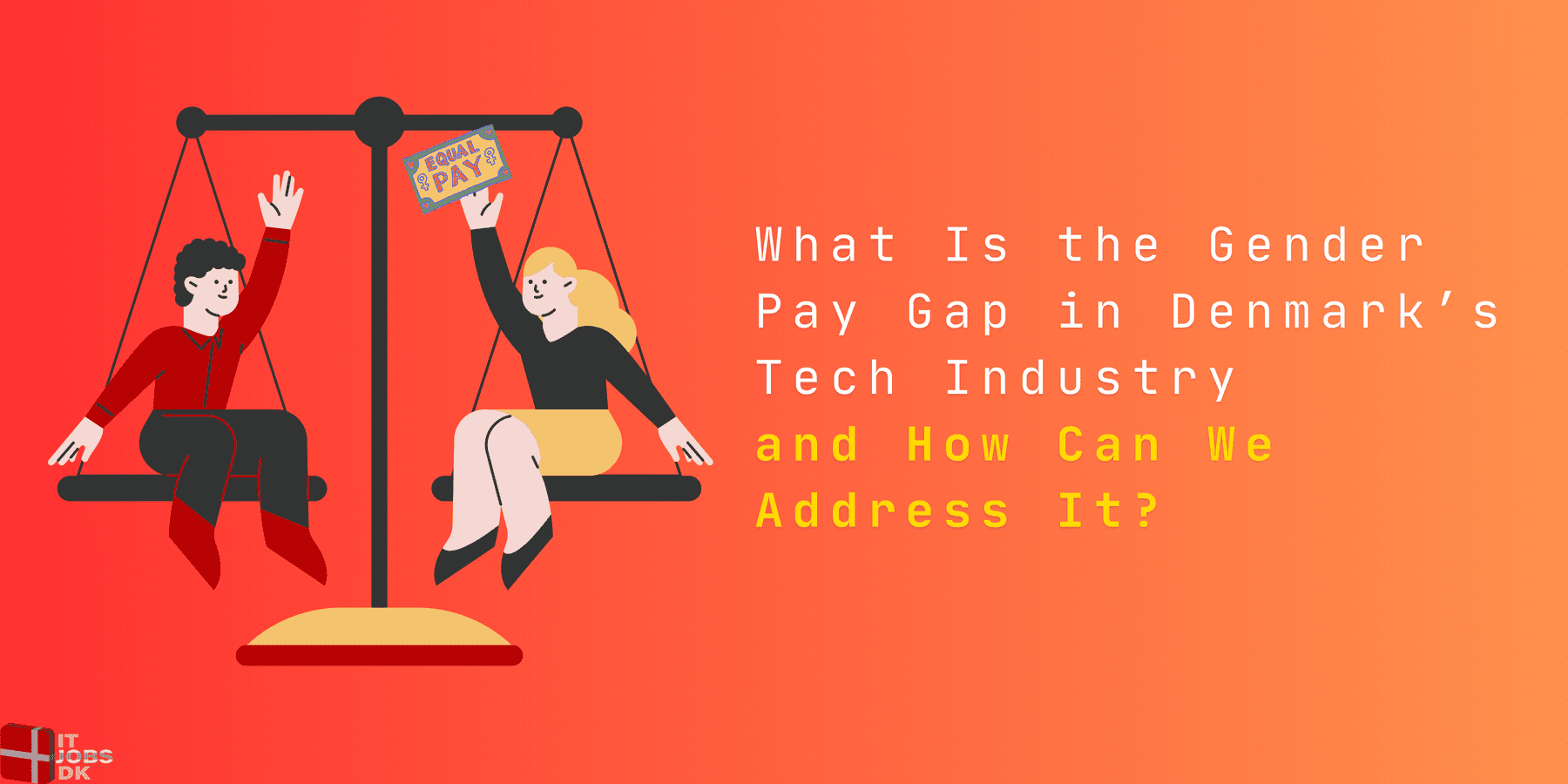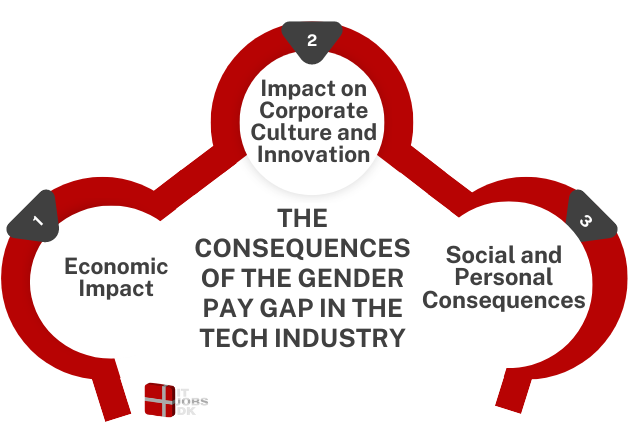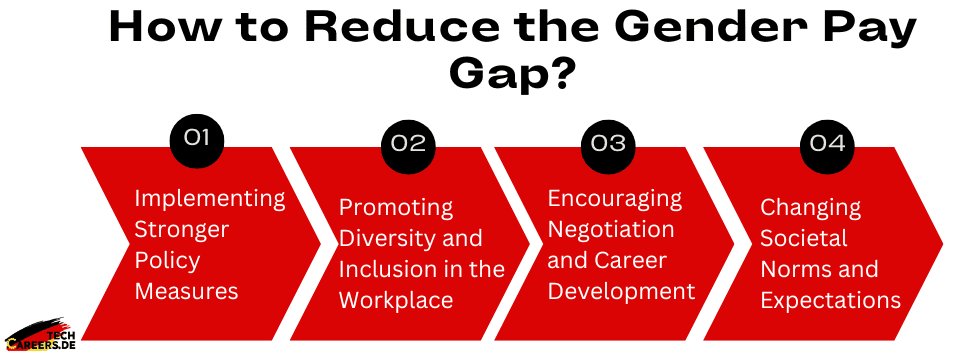
Denmark’s tech industry has long been heralded as a global leader in innovation and digitalization. The sector plays a crucial role in the nation’s economy with a highly educated workforce and a strong emphasis on cutting-edge technology. However, despite its progressive reputation, Denmark’s tech industry is not immune to one of the most persistent issues facing workplaces worldwide: the gender pay gap.
As we move into 2024, the gender pay gap 2024 remains a significant concern, especially in the tech sector. Recent data indicates that while Denmark performs better than many other countries in terms of overall gender equality, disparities in pay between men and women persist in tech roles. According to reports, women in Denmark’s tech industry earn, on average, 13.9% less than their male counterparts, even when accounting for similar job roles and experience levels.
This gap is influenced by a range of factors, including occupational segregation, where women are underrepresented in high-paying technical and leadership roles. Additionally, biases in hiring and promotion practices contribute to the disparity. Despite the increasing focus on diversity and inclusion, these challenges continue to hinder progress toward closing the gender pay gap.
LinkedIn hiring data from recent years has shown a promising trend towards more gender-diverse hiring in tech. However, while the number of women entering the industry has increased, this alone has not been enough to close the pay gap. The discrepancy often becomes more pronounced as careers progress, with fewer women advancing into senior, higher-paying positions compared to their male counterparts.
The Consequences of the Gender Pay Gap in the Tech Industry
The gender pay gap in Denmark’s tech industry has far-reaching consequences that extend beyond individual financial disparities. These effects ripple through the economy, corporate culture, and society at large, creating challenges that can hinder both personal and professional growth.
Economic Impact
At the macro level, the gender pay gap reduces overall economic productivity. When women are consistently paid less than men for the same work, it results in a misallocation of resources, where talent is not fully utilized. This not only limits individual earnings but also diminishes the potential economic contributions of women in tech jobs in Denmark. The cumulative effect of these earnings disparities can lead to significant reductions in the country’s GDP, as half of the workforce is not compensated equitably for their contributions.
Furthermore, the pay gap contributes to the so-called “brain drain” in the tech industry. Women who feel undervalued in Denmark’s tech sector may seek opportunities in countries or industries where gender pay parity is closer to being realized. This migration of talent can further exacerbate skill shortages in critical areas of the tech industry, ultimately impacting Denmark’s global competitiveness.
Impact on Corporate Culture and Innovation
The gender pay gap also negatively affects corporate culture within tech companies. Persistent pay disparities can lead to lower morale among female employees, decreased job satisfaction, and higher turnover rates. When women perceive that their work is not valued as highly as their male counterparts, it can result in a disengaged workforce, where innovation and creativity are stifled. This environment not only hampers personal career development but also restricts the company’s ability to innovate and adapt to new challenges in the fast-paced tech industry.
Moreover, companies that fail to address pay inequities risk damaging their reputations. In an era where transparency is increasingly valued, companies that are perceived as perpetuating gender-based pay disparities may find it more difficult to attract top talent, particularly as younger generations prioritize workplace equality. This can lead to a vicious cycle where a lack of diversity further entrenches the gender pay gap, creating a homogenous work environment that lacks diverse perspectives necessary for innovation.
Social and Personal Consequences
On a personal level, the gender pay gap can have long-term financial implications for women, affecting their ability to save for retirement, invest in property, or pursue further education. Over time, these financial setbacks contribute to wider societal inequalities, where women, particularly those in tech jobs in Denmark, are less likely to achieve financial independence or security.
The pay gap also reinforces harmful gender stereotypes, perpetuating the notion that men are more capable or deserving of higher compensation than women. This cultural bias can discourage young women from pursuing careers in tech, fearing that their efforts will not be equally rewarded. As a result, the pipeline of future female tech professionals may dwindle, further perpetuating the cycle of gender inequality in the industry.
In conclusion, the gender pay gap in tech industry is not just a matter of unequal paychecks; it has profound consequences that affect economic productivity, corporate culture, innovation, and social equality. Addressing this issue is crucial for ensuring that Denmark’s tech sector remains competitive, innovative, and inclusive, providing equal opportunities and rewards for all its professionals.

How to Reduce the Gender Pay Gap?
Addressing the gender pay gap in Denmark’s tech industry requires a multifaceted approach that involves government policy, corporate responsibility, and individual action. By understanding what is the gender pay gap and the strategies needed to close it, stakeholders can work together to create a more equitable and inclusive tech sector.
1. Implementing Stronger Policy Measures
Government intervention is crucial in reducing the gender pay gap. Denmark already has robust gender equality laws, but further enhancements could make a significant difference. One key measure is to mandate pay transparency across all sectors. When companies are required to disclose salary information, it becomes easier to identify and address disparities. Countries like Iceland have successfully implemented pay transparency laws, which have contributed to narrowing the gender pay gap.
Another potential policy measure is the introduction of stricter penalties for companies that fail to comply with equal pay regulations. By holding organizations accountable through fines or other sanctions, the government can ensure that equal pay becomes a non-negotiable standard across the tech industry.
2. Promoting Diversity and Inclusion in the Workplace
Companies play a pivotal role in closing the gender pay gap. One of the most effective strategies is actively promoting workplace diversity and inclusion. This includes setting clear targets for gender representation in leadership positions and ensuring that women have equal opportunities for advancement.
Additionally, companies should regularly conduct pay audits to identify and rectify any discrepancies in compensation. These audits can help uncover unconscious biases or structural inequalities that contribute to the pay gap. By addressing these issues, companies can foster a more equitable work environment.
Flexible work policies are another important aspect of promoting gender equality. By offering parental leave, flexible hours, and remote work options, companies can support both men and women in balancing their professional and personal lives. This helps retain female talent and challenges traditional gender roles that contribute to pay disparities.
3. Encouraging Negotiation and Career Development
On an individual level, women in tech should be encouraged and supported to negotiate their salaries and advocate for their worth. Many women are socialized to accept lower pay or are less likely to negotiate, which can contribute to the gender pay gap. Offering workshops or training on negotiation skills can empower women to ask for the compensation they deserve.
Mentorship and sponsorship programs are also vital. By connecting women with mentors who can provide guidance and sponsors who can advocate for their advancement within the company, women are more likely to achieve higher-paying positions and break through the barriers that contribute to the gender pay gap.
4. Changing Societal Norms and Expectations
Finally, addressing the gender pay gap also involves challenging and changing societal norms and expectations around gender roles. This includes encouraging more women to pursue careers in tech and other high-paying fields from an early age. Educational initiatives that target young girls and promote STEM (Science, Technology, Engineering, and Mathematics) education can help diversify the talent pipeline and reduce occupational segregation.
Public awareness campaigns can also play a role in shifting societal attitudes toward gender and pay. By highlighting the benefits of gender equality in the workplace, these campaigns can help build public support for the necessary changes in both policy and practice.
Closing the gender pay gap in Denmark’s tech industry is not an overnight process, but it is achievable with coordinated efforts from all sectors of society. By implementing stronger policies, promoting workplace diversity and inclusion, encouraging individual empowerment, and changing societal norms, Denmark can continue to lead by example in the global movement toward gender equality

Are You Ready to Take Action Against the Gender Pay Gap in Denmark’s Tech Industry?
Discover the practical steps needed to create a more equitable future and join the movement for equal pay and a fairer workplace today!


 Previous Post
Previous Post Next Post
Next Post